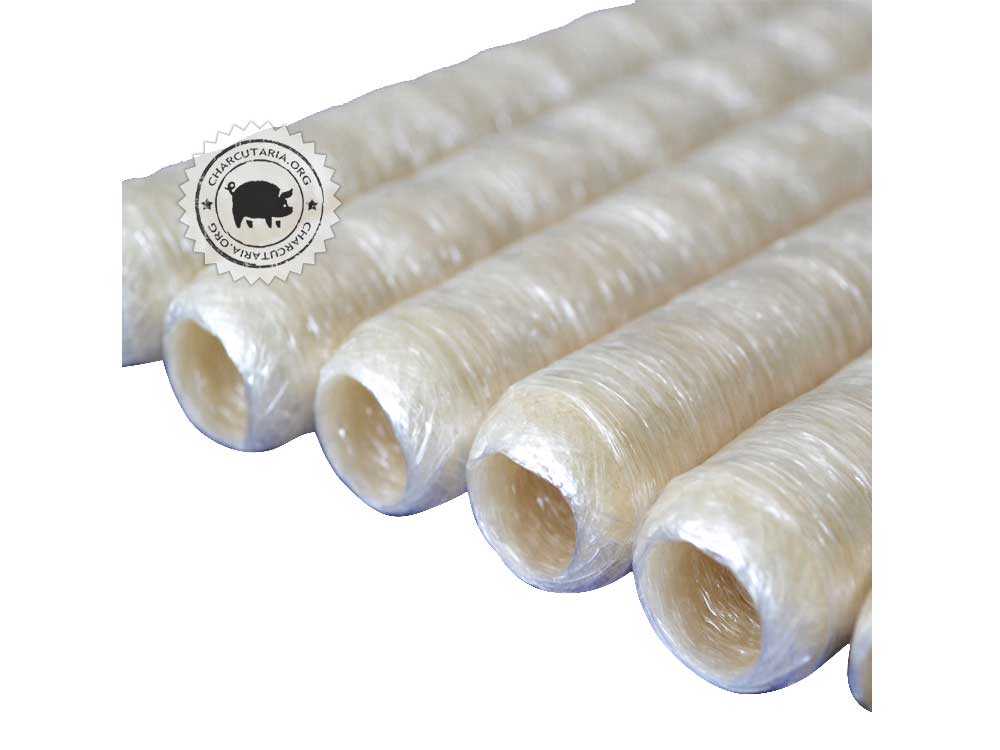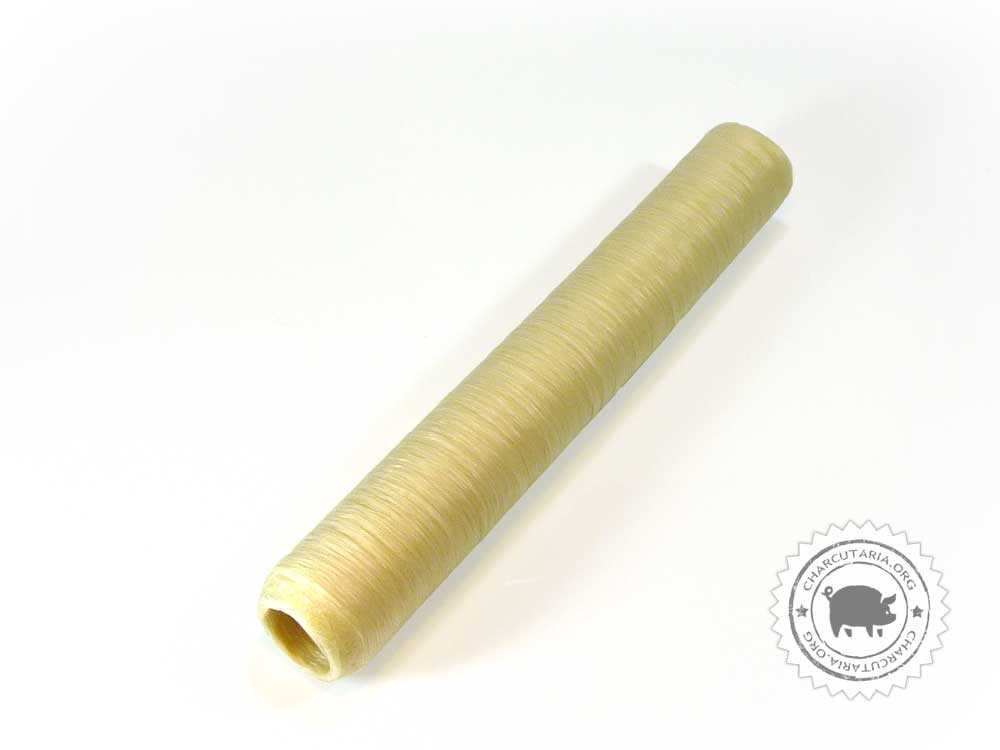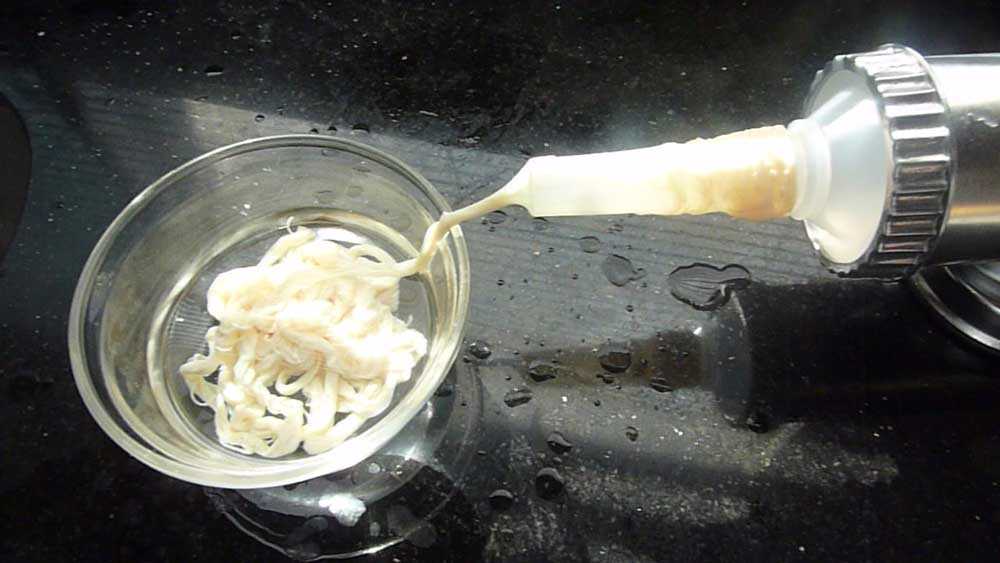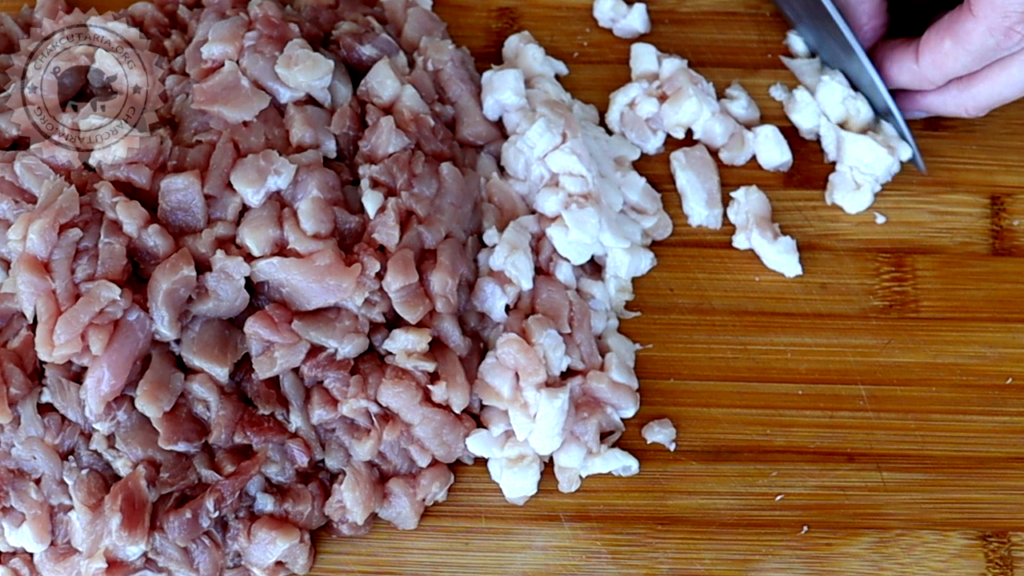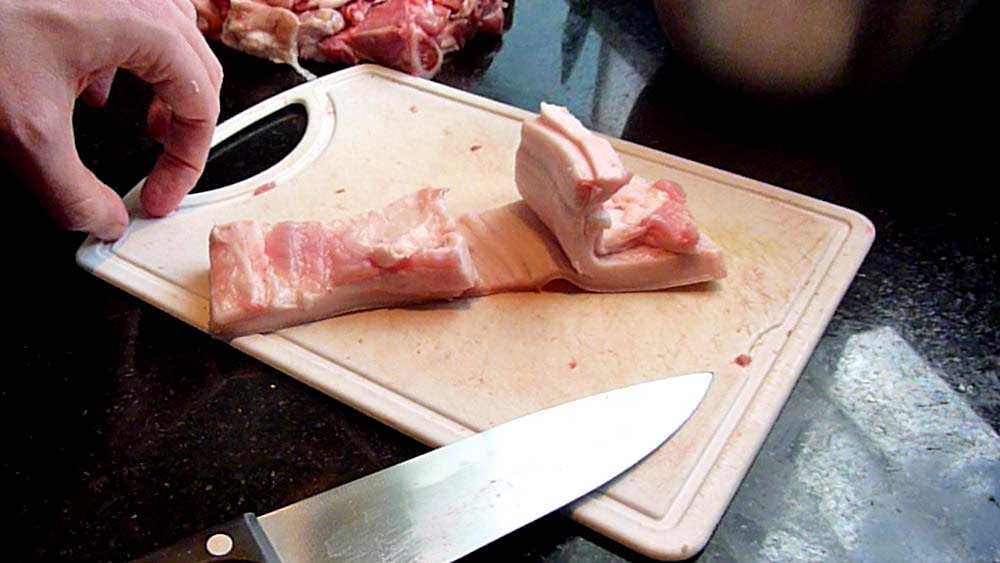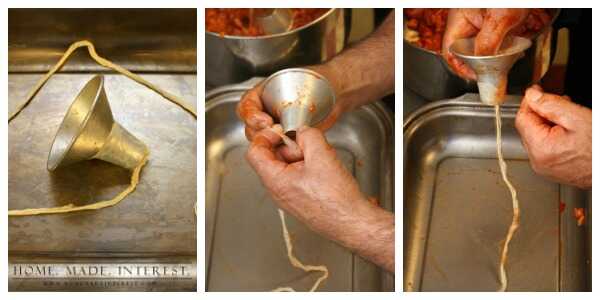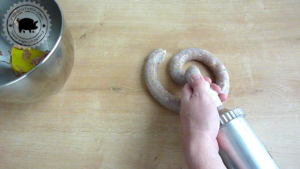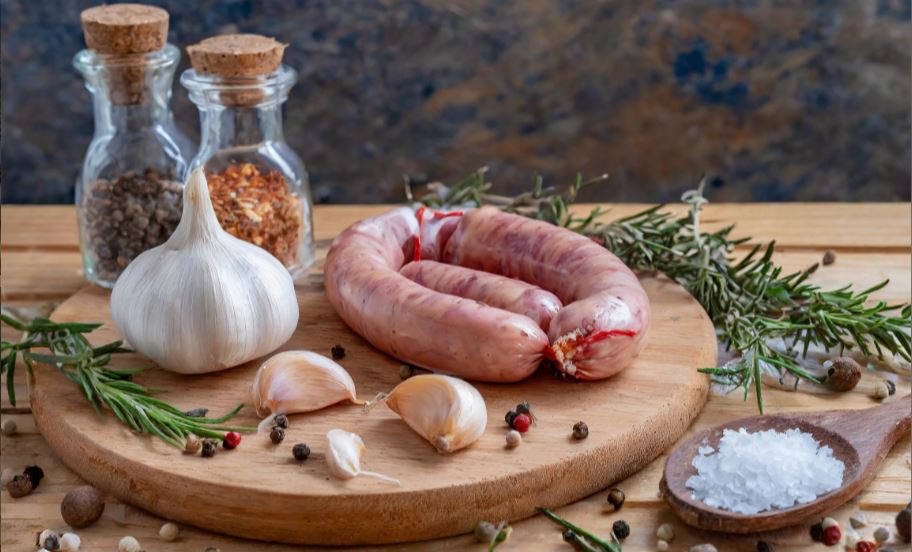
Learn how to make sausages at home using the correct equipment and procedures to obtain a result that is far superior to the sausages offered by markets, which often use meat scraps, added water to gain weight, excess additives and excess fat. With simple rules you will be able to make the best sausage you have ever eaten in your life.
What meat can I use to make sausage at home?
To make barbecue sausages, the ideal is cuts of meat that have a good combination of protein and fat. Barbecue sausages are usually made with pork, but try combinations with beef, poultry and lamb. Here are some meat options that work well for making barbecue sausages.
- Pork shank: Ham is the most popular choice for barbecue sausages. It offers a good amount of fat, which helps maintain juiciness during cooking.
- Pork loin: Pork loin is a lean meat, but it can still be used for barbecue sausages, especially for reduced fat consumption.
- Pork rib: Pork ribs are very tasty meat and provide a good proportion of meat and fat.
- Pork fillet: Just like beef filet mignon, pork fillet is a very lean and tender meat, which even without so much fat still maintains a good degree of juiciness. It can be mixed with other fattier cuts to obtain a balanced and tasty sausage.
- Beef: If you prefer a barbecue sausage with beef, choose well-marbled cuts, such as sirloin, rump or brisket. Adding pork fat can help balance the leanness of the beef. Mixed sausages with beef and pork are also good options to balance the flavors.
- Chicken or turkey: for a lighter option, choose to use chicken or turkey meat. However, be sure to add fat (like bacon) to prevent the sausages from becoming too dry during cooking.
- Lamb: the lamb shoulder is an interesting and different option. It is a meat with a more striking flavor that will make a difference in your barbecue. Seasoning with a little mint is quite common to further enhance the special flavor of the lamb meat.
When choosing meat, remember to balance the ratio of lean meat to fat to achieve a juicy texture. The final flavor will also be influenced by the seasonings and spices you choose for the mixture.
Sausage making equipment
- Very sharp knife or meat grinder (disc with wide holes, 10mm or larger);
- Natural pork, sheep or collagen casing;
- Sausage filler, which can be a wide common funnel or specific equipment;
- Scale, ideal for measuring down to milligrams;
Grind or cut with a knife?
Homemade meat grinders have very small screws, which can crush the meat, leaving a strange, brittle texture. Grinder discs with holes that are too small also ruin the texture of the sausage. The meat cannot be ground very finely or crushed, it must be whole pieces. Only large grinders do this job well. Home grinders are generally not suitable for making good sausage. For large quantities, cutting with a knife is unfeasible, but for homemade products it is recommended to use a good sharp knife and cut the meat into small pieces, one to half a cm long.
Natural or collagen casing?
Natural tripe has a better “bite”, that is, it is softer and easier to swallow, but on the other hand it is more difficult to work with, as it is soft, bursts more easily and needs to be desalted before using. Collagen casing is more difficult to digest and is more rigid when biting and cutting. On the other hand, it is easier to work with as it comes ready to use and there is no need to desalt it. I particularly prefer natural casing, because for homemade products what counts is quality and not productivity. Do not use cellulose, synthetic or fibrous casings as they are not edible.
Seasonings for making sausage
salt
The amount of salt varies greatly according to individual taste, but as a rule of thumb, use between 5 g and 10 g of salt for every 500 grams of meat and fat, that is, between 1% and 2% of the weight of the salt sausage. This amount will vary according to preference, but it is recommended to start the process within this measure to avoid excesses.
Spices
Preferably use fresh seasonings, but you will also get a good result using dry seasonings, such as garlic flakes, dehydrated onion, peppers, oregano, ground ginger, bay leaf powder... dried herbs and spices, such as oregano, basil, thyme, etc. should be crushed shortly before use to release flavor. Dried herbs and fresh seasonings can contain contaminants, so choose good suppliers to avoid contaminating the product from aromatic herbs.
All the fun of the process lies in the seasoning, as this is where you can use your creativity to create unique recipes that will give personality to the base of your sausage, which is the meat. The choice of meat and seasonings is the soul of this delicious charcuterie art that is sausage production. What would be the fun of making a sausage that is the same or similar to the one in the supermarket?
Seasonings that are functional natural additives
- Garlic – natural bactericide and fungicide
- Onion – natural bactericide and fungicide
- Rosemary – natural antioxidant, ideal to use rosemary extract or rosemary oil
- Celery – is a natural source of sodium nitrite (additive to curing salt)
- Beet – source of sodium nitrite and natural coloring
- Lemon – natural acidifying preservative
Additives used in commercial sausages
- Curing salt: to use or not to use, read the publications: Tips for making homemade sausage It is Curing salt what it is and how much to use
- Healing Accelerator: if you choose to use curing salt, it is recommended to also use an accelerator, which can be ascorbic acid or sodium erythorbate. As a natural alternative, it is possible to use cherry powder as a source of ascorbic acid.
- Antioxidants: rosemary extract is a great all-natural antioxidant agent
- Connectors: to help with binding, which is the product's potential to retain moisture and fat, use vegetable proteins, such as soy, and/or powdered milk. Furthermore, working the meat after it is cut also helps the protein retain fluids.
- For more information read the post Additives for sausages
Curing salt, to use or not to use?
The curing salt will leave the sausage, after roasting, with that pink tone typical of cured products. Without curing salt, the sausage will have a gray tone after cooking. Furthermore, the curing salt will provide a specific flavor, help prevent rancidity and provide more durability as it has a preservative function. But, despite being a component naturally found in several vegetables, there is a lot of controversy about possible links to the incidence of cancer. Its use is mandatory commercially, but for homemade products there is no obligation, so it is up to you to decide whether to use it or not. To learn more about curing salt, read the post Curing salt what it is and how much to use.
Procedures for making sausage at home
Cut the meat into cubes, generally 1cm thick or a size suitable for the size of the inlet nozzle of the meat grinder used. It is possible to “grind” the meat with a very sharp knife, but the process will take much longer. If you have a very good grinder, with a wide thread and a mouth with a half-inch hole, use it as the result will probably be very satisfactory. If you have a small grinder, use a knife instead. Small grinders can ruin the texture of the meat.
Before grinding, it is recommended to season the diced meat with salt, pepper, herbs and spices that you will use to flavor the sausage. Leave it in the fridge for a few hours so that all the seasonings, especially the salt, are well absorbed and evenly distributed throughout the meat. If you cut with a knife, season after cutting.
Always keep everything cold
It is important to keep the meat as cold as possible throughout the sausage production process, as if the meat gets too hot during production the fat will separate. And the less the fat comes out, the better, as the final product will be a juicier sausage. It can be left at a temperature close to freezing and then proceed with grinding or cutting.
When cutting the meat, remove as many sinews as possible, as these can become trapped in the discs during grinding and alter the texture of the meat.
What fat to use to make sausage?
For both sausages and any sausage, the ideal is to use rigid fat, such as subcutaneous fat. In pigs, this fat is abundant in the belly, which is often used to make bacon. When buying a piece of ham, for example, the rigid fat will be between the skin/leather and the meat. Carefully remove the skin, cut the fat into cubes and store it in the freezer. The ideal is to include this fat at the very end of the process, just before embedding, as the colder it is, the less chance it will have of melting during production.
Mix well
After grinding, mix the meat vigorously so that the protein is well worked, you can add some very cold liquid at this stage, such as wine, juice or even ice, just don't forget that it is important that everything is well incorporated into the mixture. mixture. Adding liquids increases the moisture of the final product.
The important thing is not to make the meat brittle, you need to obtain a very homogeneous, sticky mixture, as this way the sausage will have a firmer consistency. You can mix by hand or with a mixer with a flat paddle or hook, see which one suits your equipment best. The important thing is to mix well until the mixture becomes sticky.
Filling the gut
Natural casings are salty and need to be rinsed inside and out and soaked in water for at least 30 minutes.
If you don't have specific equipment for embedding, no problem, use a funnel with a wide mouth and duct and your fingers or the handle of a wooden spoon to push the meat from the funnel into the casing.
If you have a bagger/cannon for stuffing sausages, insert the entire casing into the filler nozzle and keep stuffing it, trying to avoid the formation of air bubbles.
Once the entire casing is stuffed, squeeze and twist to divide and secure the separate parts. Rotate in alternating directions or tie with string.





